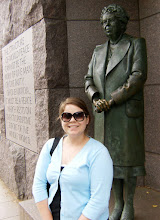Topic 3
Holly Tetreault
Emotional and Behavioral Disorders
Classroom Management
The Basics
Federal Policies and Legislation
According to Edweek.org a bill has passed through the house Education and Labor Committee that would prevent educators from applying restraint or seclusion on students with behavior issues in the classroom (Edweek, 2010). The committee on Education and Labor has released information on the Preventing Harmful Restraint and Seclusion in Schools Act. The website provides the myths and facts on behavior issues in classrooms (Committee on Education and Labor, 2010).
My Classroom Experience
Chris Borgmeier, PhD, Portland State University, created a resource to help classroom teachers assess how they manage behavior in their room. I used this form provided through the Kansas Institute for Positive Behavior Supports to assess my own personal abilities.
Mapping School-Wide Rules to Classroom Behavioral Expectations
Teacher __Tetreault__________________ Grade/Subject __K-5___
School __White Church Elementary_______________________________
School Rules: Be Safe, Be Respectful, Be Responsible
Expected Student Behavior: White Church Rules: Be Respectful, Be a Learner, Be in Control
Classroom Routine/Behavioral Expectations...
Entering the Classroom: Students wait at the bottom of the stairs (my room is downstairs) and enter the room as the previous group leaves. We walk quietly as we pass through two other groups to get to my room. Once in the room students sit in their seat at the reading table and wait for further instructions. (Everyday we have a different paper passer and pencil passer each day.)
Starting the Day: N/A
Attention Signal: We raise our hand to obtain attention.
Working Independently: We work with "Red Light Ready" voices while working independently.
Working in Groups: When working with partners we work with "Yellow Light" voices and when working whole group we use "Green Light" voices. (We have a traffic light hanging in our room. Red Light Ready is when we are quiet, hands in our laps, feet flat on the floor, and we're ready to be super readers. Yellow light is when we use a whisper voice to talk to a partner and green light is when we use our inside voice to speak to the whole group.)
Asking for Help: We raise our hands for attention.
Transition: We put our materials away and we line up in a SWAMEO line at the door. (SWAMEO is our school wide PBS model for the hallway. S=straight line, W=walking, A=arms in control, M=mouths closed, E=eyes forward, O=off the walls.)
Procedures for...
Lining up: SWAMEO (See above)
Hall Pass: We have a hall pass in case of emergencies. For non-emergencies we use the restroom on their way back to class. (We have 30 minute reading groups.)
System Obtaining Materials: Designating different students each day. (Between 3-6 students in a group; everyone gets a task everyday.)
Supplies: (See above)
Completing & Returning Homework: N/A
Reflection
My goal was to assess how I actually use PBS in my room and to measure how often I use positive supports as opposed to negative reinforcements. However, with parent/teacher conferences and a field trip Friday morning, I haven't been able to use the Classroom Behavior Assessments available on the KIPBS site.
Check back on Tuesday, February 9th after 9 P.M. to see my completed form and reflection.
!UPDATE! As of Tuesday, February 9th I'm not able to scan my document in. I will try to have it scanned in on Thursday. I completed the:
Positive Behavior Support:
Classroom Management:
Self-Assessment
George Sugai & Geoff Colvin
Center on Positive Behavioral Interventions and Supports
University of Oregon
Version: March 10, 2004
Websites to See

No comments:
Post a Comment